Decimal numbers
A) Definition
When we write numbers, the place of each digit is very important. Look at the number: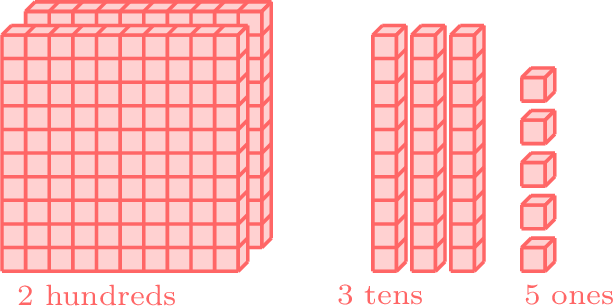
 by 10, we get a tenth which is written as
by 10, we get a tenth which is written as  To show where the Ones place is, we use a decimal point:
To show where the Ones place is, we use a decimal point: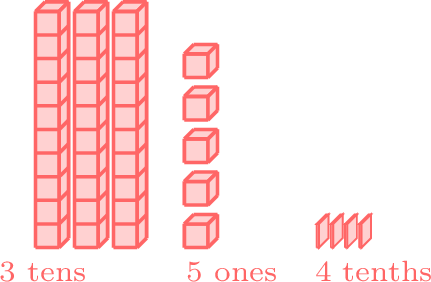

- The 5 is in the Ones place. That means we have 5 ones:

- The 3 is in the Tens place. That means we have 3 tens:

- The 2 is in the Hundreds place. That means we have 2 hundreds:
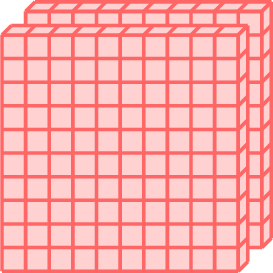
- 10 ones makes 1 ten:
 =
= 
- 10 tens make 1 hundred:
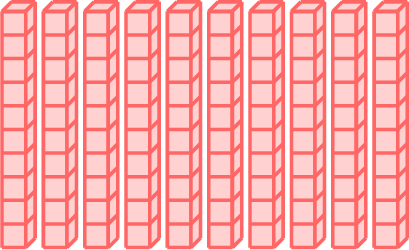 =
=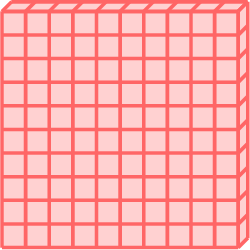
- 1 hundred
- 1 ten

Definition Decimal Number
A decimal number is a number that has a decimal point. The decimal point separates the whole number part from the part that is smaller than one. We can write a decimal number in different ways:
- Numeral form (how we usually write it):
35.4 - Expanded form :
- Table:
Tens Ones . Tenths 3 - Blocks:
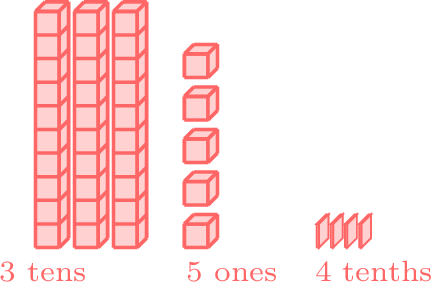
B) On the Number Line
Decimal numbers, like fractions, can be shown on a number line. A number line helps us see where the numbers go.
- Showing Tenths on a Number Line
- Imagine we cut the space between 0 and 1 into 10 equal parts. Each part is called one tenth, or

- Since

- Imagine we cut the space between 0 and 1 into 10 equal parts. Each part is called one tenth, or
- Showing Hundredths on a Number Line
Now, let's zoom in and cut the line between 0 and 0.1 into 10 equal parts. Each tiny part is called one hundredth, or 0.01.
Method How to Draw a Number Line for a Decimal Number
Here's how to put a decimal number on a number line: 
- Choose your range: If your numbers are between 2.2 and 2.3, your number line starts at 2.2 and ends at 2.3.
- Divide into ten equal parts: On a number line from 2.2 to 2.3, the first mark is 2.21, the second is 2.22, and so on, until you get to 2.30 (which is the same as 2.3).
Example
Find the value of 
- Each small division on the number line shows 0.01.

- So,